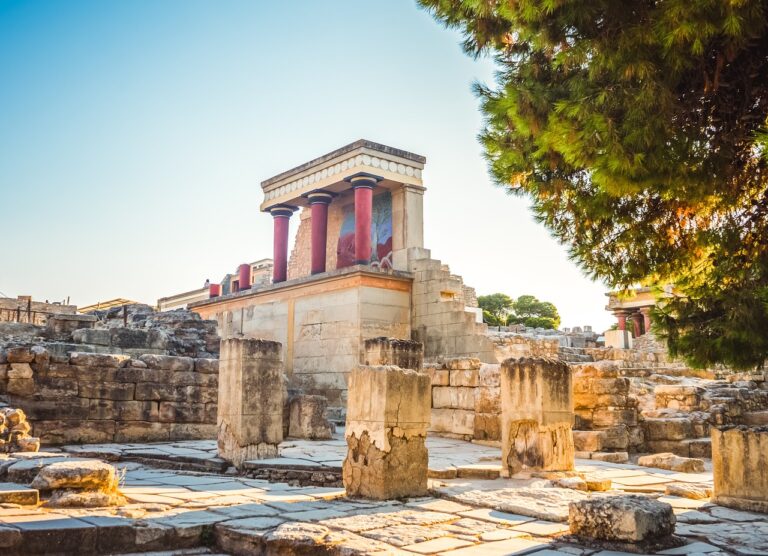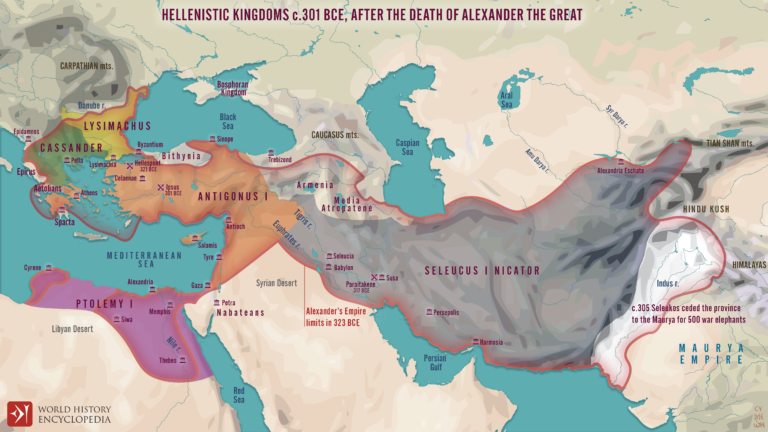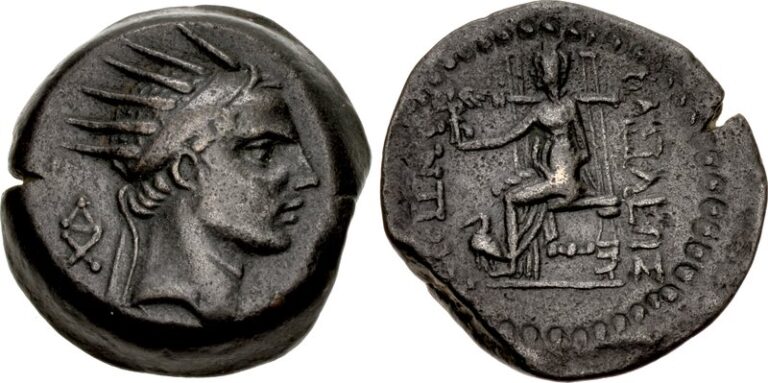ST.PAUL AND THE PROBLEM WITH CHRISTIANITY – PART I

One of the major problems with Christianity in its present form is that it is too Biblical. And one of the reasons why it is too Biblical is because it is too Christological. And one of the key reasons why it is too Christological is due to the overwhelming influence of St. Paul on the character and development of the Christian faith.
Christianity, as it stands today, is too centered on the person of Jesus Christ. This a curious reality, given that Christ is one of the Three Members who make up the Holy Trinity. And when one speaks of Jesus Christ: in terms of who he is, what he did, his message to the world, and the nature of his saving grace, fewer people have had a greater influence on the image, character, nature, and our understanding of Christ the Son of God, than one of his greatest missionaries who helped Good News of Jesus Christ. The one who is proclaimed as the greatest expounder of the Christian faith: St. Paul.
In this two-part essay, I will outline the reasons why St. Paul’s influence on Christianity, whilst considerable, is ultimately problematic.
INTRODUCTION (TO PART I)
This was intended to be a single essay, but as it went on, the range of subjects, themes, and hence the length of the final draft meant that splitting it up into two parts became the reasonable choice.
Since the two essays were not planned from the outset it may have a slight effect on the reading experience (i.e. It may seem to be working towards a conclusion in Part I, when such a (meaningful) conclusion may not be forthcoming).
However, in the course of editing Part I (and later Part II), I have worked to develop a meaningful beginning, middle, and end to this essay. Of course, the reader will have to read the next Part in order to understand the major points I am working towards in advancing a critic of this major, if not a central figure (despite the centrality of Christ) in the history of Christianity.
WHAT THIS CRITIC OF ST. PAUL ENTAILS
Critiquing St. Paul is not easy. Christianity as a belief system, as any historian of the faith would attest, owes a great deal to the works and life of St. Paul. This point is recognized.
In a way this critic of St. Paul paradoxically affirms the important contributions the man has made to the Christian faith: from the formalization of its beliefs within an accepted body of doctrines; to his great missionary journeys in the ancient world to spread the gospel; and his copious amount of writings, much of which has come to form the core New Testament, and of him as a person. That together has come to have a defining influence on the character of modern Christianity.
However, as significant as St. Paul’s contributions are, from his overwhelming presence in the early development of the faith via his many writings; to the effect he has had on Christian thinkers, theologians, and evangelists throughout the ages who have followed in his wake. Which have had a collective effect on the character, trajectory, and state of the faith. All of which, whilst considerable, is not all positive. Especially in light of the challenges Christianity is facing in the face of secular ideologies and movements in the West that continue to erode the strength of Christianity, and with it the relentless rise of Islam.
As I will explain (but not fully) in Part I of this essay, the towering presence of St. Paul whose contributions to the Church of Jesus Christ whilst monumental, are in part antithetical if not antagonistic to the message and by extension to the person of Jesus Christ. The reasons for this, as I argue, stem from St. Paul’s rather ‘simplistic’ interpretation of Christ’s message of redemption, and his innate antipathy towards the created order that God established and hoped to redeem.
WHO WAS ST. PAUL

Let me state that this will not be some elaborate delve into the life and works of the great missionary. Given the scope of this essay, I will limit my focus to certain key areas concerning his life and beliefs. Notably his views on what constitutes a life that is acceptable to God, prior to and after his famous conversion.
St. Paul before his encounter with the Lord, at Damascus, was known as Saul. Saul of Tarsus was born in the city of the same name, located on the Southern coast of what is modern-day Turkey. It was then known as Cilicia: a Roman province joined with Syria and Phoenicia. An ethnic Jew who spoke Greek (as Greek was a dominant language in the Roman world, along with its culture), Saul was raised in the tradition of Second Temple Judaism. He was a Pharisee. Yes, those obnoxious characters in the New Testament who routinely put Jesus to the test, and placed undue emphasis on adherence to the laws of Moses. St. Paul was one of them.
When one reads the gospels the animosity towards Christ expressed by the Pharisees is a striking one. These guys really had something against the upstart preacher who proclaimed the message of love and compassion, and a new Kingdom of Blessing, with Him at the center. The moral uprightness and puritanical zeal of the Pharisees that Christ unfailingly condemned, one that was partly a function of the beliefs held by the leadership of the Jewish faith in that part of the world, which in turn was a function of the times they were in.
This is a serious point. One that goes deeper than the simple animosity manifested by those in favor of the status quo towards some maverick who wishes to disrupt things. The institutional opposition to the radicality of Christ’s teachings was greatly a function of the stage in the history of Judaism. Living in precarious times under the heavy hand of the Romans with their alien ways all around them; made the Jewish (religious) hierarchy and its representatives unaccommodating towards contrarian viewpoints.
Externally, against the paganism of Latins, but also internally against various heretical movements. Notably the number of Messianic upstarts that often harbored revolutionary ambitions of liberating the Jews from the Roman yoke, but at the same time positioning themselves as the promised savior/liberator king of a restored Kingdom of David. Notable examples include Simon of Perea, who was a Herodian slave, who began a revolt against Roman power whilst claiming to be the new king of the Jews. His rebellion was quickly quelled and was soon executed by the Romans around 4 BC.
Another upstart was Athronges, known curiously as ‘the shepherd’. Who led an insurrection against Roman power and the ethnarch of Judea: Herod Archelaus. This was soon put down by Publius Quinctilius Varus, who was then the governor of Syria. Yes, this is the same guy who would feature in the Varian Disaster: where a number of Roman legions were ambushed and destroyed by German warriors in the Teutoberg forest of Germania in 9 AD. However, he was successful in dealing with the revolt in Judea, in the process crucifying around 2000 Judeans.
So the trend of Messianic pretenders was not in short supply during that time. Prior to and interestingly even after the coming of Christ. Including other Messiah-like figures who cropped up in other parts of the world (e.g. Moses of Crete AD 448).
There were a number of reasons for this. Since the idea of Messiah was closely tied to the tradition of anointing: where the divine authority to carry out God’s work was entrusted to certain ‘chosen’ people. A task that is entrusted by someone who is already anointed in some way. From prophets (Elijah to Elisha); priests (Moses to Aaron) or kings (David to Solomon).
When it came to the era of Second Temple Judaism, with hostile powers all around them, the function of a Messianic savior was generally conceived as a military leader. One that also meant such military/political fighters would take on the mantle of being spiritual liberators of the people, with claims to divine authority.
The term ‘Christ’ which in Greek means ‘anointed one’ is interesting in that Jesus as the anointed one claimed to be king, but of a different kind of kingdom. A kingdom, whilst not of this world, but was a kingdom nonetheless. Meaning, despite its otherworldly character: without soldiers and servitors, it nonetheless had an Earthly mission.
However, its conception: that the Messiah would be divine in nature, was a narrative that went against the expectations of Judaic Messianism. That of a future king who would rule over a free Jewish people inhabiting a Jewish nation, but was not divine himself. It was this promise in the socio-political sense in terms of its Earthly mission, and metaphysically in terms of the ontology of the savior, that was and remains foundational to the said religion.
The Jesus movement, on the other hand, sought to redefine the idea of salvation and messianic deliverance: as one that meant freedom from the slavery of Sin, rather than the political liberation of a single ethnic group; meant it gave rise to opponents among the extant spiritual order. St. Paul was one of them.
The zeal manifested by St. Paul in his fight against the early Church, was not too different from the Pharisees and the defenders of the Old Covenant plotting against the life of Christ in the latter stages of his ministry. St. Paul in many ways was a zealot of the old faith and his mission to stamp out Christianity can be seen as a more hands-on, street fighter approach to the ‘anti’ Christ movement of the Pharisees, who successfully orchestrated his execution.
Following his famous conversion during his journey to Damascus, Saul of Tarsus became the Apostle Paul. And later St. Paul. St. Paul following his encounter with the risen Lord, inspired by the vision, and empowered by the spirit was able to harness his deep knowledge of the Old Covenant, and of the Greek language, and his indomitable will to become a great servant of the Lord. With his considerable knowledge of the workings of the Hellenistic world, set out to carry out his ministry.
His combined skill as a writer, a spiritual leader, a thinker and visionary, and an articulate communicator of God’s word made him one of the if not the most significant contributor to the early Church and arguably the whole of Christianity. As the author of 13 (or 14, if one considers the book of Hebrews) of the 27 books that make up the New Testament. His contributions have been integral to the development of the Christian faith.
But herein lies the problem. Armed with the ideas that were stemming from the heritage of Athens, with his spiritual zeal for the Lord, St. Paul set out to not just proclaim the Good News of Jesus Christ, but in the process came to formulate the core beliefs that would constitute Christianity. St. Paul’s dominance of the New Testament, made him a towering figure in the history of the Church, making his views about integral aspects of the faith: God, Christ, Salvation, and the nature of Christian life, difficult to critique.
However, in his authoritativeness, the sheer confidence with which he articulates what he believes are the teachings of God and what it means to be a true follower of Christ; sheds light on deeper problems with his worldview, if one wishes to delve deeper.
Worldview. A word that cannot be emphasized enough when it comes to the works of the great expounder. St. Paul’s conception of what Christianity is or ought to be, came to be shaped by what he thought or believed man’s relationship with God was meant or ought to be, in relation to the wider world in which he was situated in.
The problem with St. Paul in relation to Christianity is a function of his philosophy of life. One that he had inherited vis a vie his Jewish heritage. One that was, at its core opposed to the idea of Earthly upliftment, in relation to humans will strive and rise above the trials of life.
Specifically, it was one that was antagonistic to the idea of human action as a force that works to make the world a better place via social, cultural, economic, technological, and political means. Instead what St. Paul advanced was a worldview that placed all its hope for joy and freedom in a future Messianic age: A future where God (not man) would restore the world to according to its original (perfect) design. Thus negating the powers of the mind, the strength of the body, and the extent of man’s will.
According to the Pharisees, the coming of the Messiah was transformative on a local and global scale. Where the ‘redemption’ of the Jewish people involved their political independence, the restoration of the Temple leading to an era of abundance and the end of suffering for the faithful. This joy and prosperity would go hand in hand with the redemption of humanity with the upliftment of the world. Returning it to its former glory.
This realignment of the Fallen physical creation with the heavenly realm would establish a new social order. One that would be a reflection of a new Eden. Leading to an era of joy where the faithful (i.e. the followers of the Old Covenant) would be rewarded. Underlying this view is the notion of physical resurrection for the righteous, another view that Christianity inherited from Judaism. If one looks at this narrative closely one sees parallels with Christian apocalyptic literature that concerns the Second coming of Christ.
But is this connection really problematic?
If anything the similarities between Judaism and Christianity, especially those concerning the end times, and the way to Salvation that it provides ought to be celebrated. You would certainly think so if you happen to watch a lot of CBN (Christian Broadcasting Network)!
Seriously though the problem with St. Paul, vis a vie his contributions to Christianity, stems from the fact that he was the dominant figure in not only aiding the development of Christianity but in the process of how he came to shape the faith (in Christ) into a belief system that in practice remains too much like the Judaic one it was meant to replace. Particularly when it comes to the question of the end times and how the faithful are supposed to navigate their time here on Earth.
St. Paul’s version of Christianity, which is the default or dominant form of Christianity we have today, is at its core an updated version of Judaism. This is not a problem in itself, but when one looks at what belief in God is meant to be under the Trinitarian framework, and how the Church of Jesus Christ is mandated to carry out its mission in Redeeming not just the souls of men but to uplift the Fallen world back to Christ.
A mission that is to be carried out through time with the aid of the Holy Spirit. One that was entrusted to all his followers. As opposed to waiting till the end of time for the Messiahs to return and set things right. Seen in the light of this fact, the connection between Judaism and Christianity, thanks to St. Paul, becomes a problematic one. For his worldview is ultimately antithetical to the upliftment of the world in a material sense.
In order to understand how we need to first take a look at the Hellenistic world. One that St. Paul the Pharisees, much of the early Church, and arguably the mainstream of Christianity today remains vehemently, or at least subconsciously opposed to.
THE PRE-ROMAN WORLD

St. Paul’s birth is traced to the last years of the era before Christ. It was a time when Roman power was supreme. Following the demise of the major powers that constituted the Diadochi-the Greek successors to Alexander the Great’s empire-Rome expanded control over Europe, much of the Mediterranean, and parts of Anatolia (Asia Minor).
With respect to its governed territories, Rome made the important decision to grant the Jews (in this case refers to the members of the ethnic + religious community – since back then virtually everyone was religious) religious freedom. A notable departure from the governance of Judea during Pre-Roman times, notably during the control of the region under the Hellenistic powers that Rome had replaced.
In order to understand the problem with St. Paul in relation to his contributions to Christianity, we need to understand the nature of his beliefs which were a function of the world from which he came. One where Second Temple Judaism ruled. A period in the history of the Jewish faith that was characterized by deep suspicion toward alien cultures and beliefs.
A state of mind that was driven to a puritanical extreme. Where the zeal to preserve what it considered sacred became almost a fanatical one. Fanatical in its exclusionary character. Thanks mainly due to the hardships it had endured over the centuries at the hands of hostile foreign powers, the most notable being the Seleucids, which was partly a function of the ethnological character of its religion.
THE SELEUCIDS

The Seleucid empire was founded by Seleucus I Nicator. One of the leading generals (Diadochi) and a comrade of Alexander the Great. Following the conquest of Persia, Seleucus I was appointed as satrap or governor of Babylon (321 BC).
Following Alexander the Great’s death confronted with the growing power of Antigonus I Monophthalmus, at the time most powerful Diadochi; Seleucus I after much political intrigue and tactical maneuvering (which at one point involved allying with Antigonus against the upstart Eumenes) eventually had to seek refuge with his future enemies, the Ptolemies in Egypt (BC 316).
Upon his return to Babylon, with the wars of Alexander’s other successors raging on, he managed to establish political control over the multi-religious, multi-ethnic region of Mesopotamia. Setting himself up once again as the satrap of Babylonia (311 BC). Whilst Antigonids were preoccupied with fighting in the West, Seleucus strengthened his position in the region and sought to expand further East. His contact with the Mauryan empire of India (BC 305 – 303), after a short conflict, led to the acquisition of 500 war elephants in return for territorial concessions which would prove decisive in later conflicts.
The marriage of his daughter to the Indian king was meant to solidify the union between the two powers. The practice of intermarrying into the ruling elite of foreign and often hostile nations was done for strategic and geopolitical reasons, but also with the aim of integrating different cultures together.
The Seleucids, somewhat uncanny to the ancient culture of the time, welcomed the assimilation of other peoples into their own. And did not fear the integration of foreign peoples with their own. A worldview that was likely built on the belief in the inherent superiority of Hellenistic culture. One that would strongly characterize the Seleucid rule.
Returning to the battle arena. Despite a periodic break from conflicts, war with Antigonids soon broke out. In a series of battles fought between the Diadochi: where Alexander’s successors fought a (rare) united war against a single enemy: the Antigonids.
Known as the Babylonian War. That ended with the defeat and death of one-eyed general Antigonus I Monophthalmus. Bringing to a close the dominance of the Antigonid dynasty-who for a short time had also ruled over Judea-in Asia Minor and the East.
After the war, the surviving Diadochi parceled out the remaining Antigonid territories with the exception of Macedon, which would go to the surviving son of Antigonus: Demetrius I, who would continue to rule in Macedon. With the Egyptian (ethnically Macedonian, but culturally Greek) Ptolemies taking over Judea, Lysimachus occupied Thrace and Northern Anatolia.
The Seleucids would come to control the vast areas of Mesopotamia, Central Anatolia, and importantly for our discussion the region of Judea. At the height of its power, the Seleucid empire would control a land mass that would stretch from of eastern Aegean Sea, Thrace (modern-day Bulgaria) to the frontiers of India.
After the defeat of Antigonus, there was no respite as was characteristic of the Diadochi era, with conflict soon breaking out. With the Seleucids and Ptolemies fighting for control over Judea and surrounding regions. Known as the Syrian Wars (167 – 274 BC). The defeat of Ptolemy V of Egypt in two key battles in Gaza and Paneus (200 – 198 BC) by Antiochus III (241 – 187 BC), led to firm Seleucid control of Judea (or Palestine).
Things went well for the locals for some time under the Seleucids who maintained their policy of giving cultural and religious freedom to occupied territories. However, around that time the Punic wars between Rome and Carthage were ongoing (264 to 146 BC); with the Antigonid Macedonian kingdom that had survived as an independent entity following the defeat of its founder Antigonus I. Now under his descendant Philip V, decided to aid the Carthaginians against Rome. This did not go down well with the then-emerging Roman power. Leading to the first and second Macedonian wars. Culminating with the defeat of Philip V in the second major conflict, resulting at the end of Macedonian power in Greece.
The Seleucid empire by the time Antiochus III (the Great) took over (222 BC) was in steady decline. With the key Bactrian and Parthian in the East provinces breaking away. Antiochus III revived the waning Hellenistic power, with a string of victories against the rebel kingdoms of Bactria and Parthia.
Antiochus III rightly suspected the expanding Roman power would soon turn its attention further East, and preempted Roman aggression by striking first, with the Latins still occupied with fighting Carthage. This gamble failed. As he was defeated in two major battles: at Thermopylae (191 BC) and then decisively at Magnesia (190 BC).
Following these major setbacks, the Seleucids had to accept Rome’s steep demands. The Treaty of Apamea (188 BC) effectively ended Seleucid power in Europe and compelled the empire that once united the Western and Eastern worlds, to give up virtually all of its holding in Anatolia, and the Aegean sea, requiring it to pay 15,000 talents in war indemnity. Other harsh conditions included the taking of Antiochus III’s younger son, Antiochus IV as a political hostage to Rome.
Following the murder of Seleucus IV Philopator (175 BC) the second son of Antiochus III, Antiochus IV was substituted for Demetrius I Soter as a hostage. Upon his return, the upstart (as the rightful heir was the young Demetrius I) was able to gather enough support from the ruling classes, and with the true heir out of play, Antiochus IV became king and ruler of what was left of the Seleucid empire in the year 175 BC.
REIGN OF ANTIOCHUS IV EPIPHANES

King Antiochus IV Epiphanes (meaning ‘God Incarnate’) was a great celebrant of Greek culture. Characterized by a spirit of extravagance and proclivity for showmanship, he attempted to stem the decline of Hellenistic power following the setback at Magnesia and growing Roman power in the region.
Antiochus IV sanctioned the construction of new cities, Greek temples, and monuments; strengthened ties with the Greek world, and started to build up its military that had been severely curtailed by Roman power. In advancing the Seleucid position against the Ptolemies, he even started to reassert Seleucid power in parts of Europe (Mediterranean) with the capture of Cyprus. One of these audacious military adventures was his advance into Ptolemaic Egypt which was under the aegis of Rome. But renewed opposition by the Latins compelled his exit.
This turn of events presumably turned the now bitter and raging Hellenistic king’s attention closer to home. Judea, the home of Jews whose capital Jerusalem lay close to the capital of the Seleucid empire: Antioch, was a point of interest.
One of the characteristic features of Seleucid rule was the co-leadership involving the representatives of the disparate ethnic and religious groups it lorded over and the Hellenistic cultural hierarchy, which was predominantly Macedonian. An arrangement that worked well as long as the subjugated peoples were given a degree of cultural autonomy, but recognized the supremacy of Greek rule. In addition to facilitating the assimilation of peoples in occupied territories into Greek culture over time (e.g. the Sadducees).
Trouble began when Antiochus IV’s zeal for spreading Greek culture took a life of its own. Militarily constrained by Roman power, and confronted with the growing strength of the Parthian hordes to the East, Antiochus IV sought to advance the Hellenistic way of life through the arts and commerce which flourished in the Western Seleucid capital city of Antioch in Syria.
His worldview was one where the advancement of the Greek religion, the cultural norms it elevated, and the coherence of the polity it was meant to give rise to, were to go hand-in-hand with the Seleucid system of government.
This modus operandi soon encountered opposition among the inhabitants of Judea. The policy of advancing Hellenistic culture in Judea as a policy of the State, in a land that had maintained its cultural (and ethnic,) distinction vis a vie its religious heritage, proved too much for the majority of the Jewish populace who had not embraced Hellenism.
The appointment of the pro-Hellenistic Joshua as the high priest-who took on the Hellenized version of the name: Jason-a man who had no real loyalty to Jewish culture or the nation, and desired the full integration of Jews into Greek culture.
Under him, the Hellenization of the Jewish culture went apace. From the introduction of a gymnasium in Jerusalem, the conducting of Greek festivals dedicated to the Olympian Gods, and the ostracization of traditional Jewish practices like circumcision. This is a key point, that I will engage in the next section on the different views held towards the divine by the Jews vs Greeks, including the Hellenized Jews.
Antiochus IV Epiphanes unlike his predecessors had no tolerance for a competing system of belief, notably one that actively resisted Greek culture. So the undermining of Jewish culture became an end in itself, done with the aid of Hellenized Jewish enablers.
The position of the high priest soon became an auctioning item, with Jason who had made the highest bid to attain it, in turn being outbid by another Hellenized Greek, Menelaus. Who replaced him as high priest (171 BC). Driving the former into exile, with the temple treasury being looted by the successor to pay the king. These actions did not go unnoticed by the local populace.
Around this time the Sixth Syrian War (195 – 170) was ongoing, and King Antiochus IV was busy campaigning in Egypt. (The term ‘Syria’ is used in relation to the Seleucid empire, as it was the place of one its two capitals: Antioch, the other being Seleucia in Babylon). When unverified reports of the king’s death reached Judea. At this point, Jason, who at the time was in exile returned with a small force and attacked the city. This was on the back of other minor revolts by the local populace against the (bad) governance of the Temple.
All of which proved too much for the king. Upon his return from Egypt ruthlessly put down a Judea that was in revolt. What followed, according to Biblical accounts (Maccabees 2) was a massacre of tens of thousands of natives, with the women and children sold into slavery, and the burning down of parts of the city.
Other atrocities followed. Antiochus IV clearly had a problem with Judaism as a religion and possibly with Jews as a people (who were unwilling to embrace Hellenism). The appointment of a Hellenized high priest, the banning of traditional forms of worship, and as an open act of hostility towards Judaism, the dedication of the Temple in Jerusalem to Zeus, with sacrifices of unclean animals (according to Levitic law) encouraged.
A key source of angst for the Jewish hierarchy was the promulgation of pagan practices that not only elevated the flesh over the spirit in concept but rendered carnal acts a certain spiritual value.
One of the main social functions of the Pharisees was to prevent or minimize the effects of pagan culture on the Jewish people. Its overtly sensual character was a stark contrast to the restrictive way of life proscribed by the Torah. Arguably Antiochus Epiphanes hatred of the Jewish religion partly stemmed from this seemingly diametric opposition to the Greek way of life that characterized the religion of Judeans.
The violence against the Jews who remained faithful to the Old Covenant in the face of Hellenistic power is portrayed in gory detail in the two Deuterocanonical works. The key takeaway for our discussion on the worldview of St. Paul is on the relationship between the nature of God, or specifically on how the divine is conceptualized and affirmed, and what that belief entailed in a social and cultural sense, as it played out in the conflict between the Hellenistic world and the Judean one.
Before we get to that, one must recognize the effect that the anti-Judaic campaign launched by Antiochus Epiphanes had on the Jewish mind.
Here I am using the term ‘anti-Judaic’ rather than anti-Jewish or anti-Semitic, as it is a better expression of the real conflict of the time. As the Jews of the Hellenistic period were a tightly knit ethno-religious community, with the cultural dimension of the Jews being integrated with the religion and race. Unless we are talking about Hellenized Jews like the Sadducees.
It must be further pointed out that, unlike modern antisemitism, which is a form of bigotry directed against Jews as people, one that is often advanced regardless of the person’s religious heritage.
The prosecution of the Jews under the zealously Hellenistic (pagan) Antiochus IV was a key moment in the history of their faith that would come to shape Jewish identity. Hanukkah or the Festival of Lights, is still celebrated, and marks the rededication of the Temple in Jerusalem following the Maccabean revolt. Its importance is a function of the severity of the threat posed by Hellenistic power to Judaic culture. One that came on two fronts: religion and race.
RACE AND RELIGION IN THE POLITICS OF HELLENIZATION



Cultural assimilation was a key feature in the process of the Hellenization of conquered nations by the Greek powers.
The Diadochi consisted of the ruling Macedonian elites, who held executive positions in the various regions they lorded over. Whose authority was underpinned by the dominant ethnic Macedonian inner circle, which was an extended group of family and friends who held commanding positions in key organs of the state.
This was followed by sizable ethnic Greek populations who would make up the cream of the society they ruled over. Who in turn were supported by local populations who had adopted Hellenization at varying degrees, and helped prop up the hegemonic power in this multi-ethnic, multi-cultural, multi-religious empire.
However, the survival and endurance of this system were heavily reliant on the support of conquered territories which consisted of people who were for the most part neither ethnically Greek nor culturally Hellene. Whilst the degree of Hellenization was present at varying degrees, from the outset the majority of the conquered populations did not feature the religious, ethnic, or linguistic connection with their new overlords. Thus governance of these yet-to-be-fully Hellenized territories that made up sizable parts of the empire, proved a vast challenge for the Seleucids, who were also battling rival powers on multiple fronts.
A key feature of the Seleucid system of governance was the centrality of Hellenistic culture in the governing hierarchy. One that was a reflection of the Macedonian high court, which had to be strengthened by the progressive Hellenization of the peoples who lived in conquered territories. A process that the peoples many in the parts of the empire, owing to their extant religio-cultural heritage, resisted.
When it came to the Hellenization of alien peoples, who despite having surrendered militarily and to varying degrees politically in terms of their autonomy to the Seleucids, nonetheless continued to maintain at varying degrees, a level of control over their social and private lives. With native religions and languages, and the myriad of norms and customs they engender, continuing to direct their lives.
In the case of Judea, this was profoundly so.
The Jews who lived in what was once the former Southern Kingdom Judah had maintained their cultural identity apart from not only the pagan civilizations that were around them but also from the Samaritans who were the decedents of the Northern tribes of Israel that split following the religious and political schism during the reigns of Rehoboam and Jeroboam.
Following the conquest of the Northern Kingdom by the Assyrian empire, the people of Israel (excluding the tribes of Judah and Benjamin) were taken into captivity with their former lands (in Israel or the northern part of Judea) populated by alien peoples from other parts of the empire. These people would become the Samaritans.
A line of argument that is gaining traction in recent times is that the Samaritans are in fact Jews (or strictly speaking Israelites: the descendants of the tribes Jacob, other than Judah and Benjamin). But during their time in captivity had mixed with gentiles or ethnic non-Jews (). Which became a source of division between Jews and Samaritans, the latter is portrayed as a hated group in Scripture.
For differences between them is not only in terms of their religious character but possibly also due to race. The Jews who lived in Judea were racial if one is to use the term, ‘purer’. The policy of maintaining the ethnic character of the people is something that went hand in hand with the teachings of their ancestors.
Teachings that forbade not only intermarriage but indeed any form of cultural admixture with foreign peoples. A point that was set in stone in Chapter 7 of the Deuteronomy, one that would come to define the religious and later the national character of the Israelites.
‘Make no treaty with them, and show them no mercy. Do not intermarry with them. Do not give your daughters to their sons or take their daughters for your sons, for they will turn your children away from following me to serve other gods, and the Lord’s anger will burn against you and will quickly destroy you. This is what you are to do to them: Break down their altars, smash their sacred stones, cut down their Asherah poles, and burn their idols in the fire’.
Such teachings on intermarriage with foreign peoples and the strong opposition to any form of cultural integration were again echoed by Ezra and Nehemiah following their return from exile. Teachings which are articulated in a language that by present standards is borderline xenophobic:
‘The land you are entering to possess is a land polluted by the corruption of its peoples. By their detestable practices, they have filled it with their impurity from one end to the other. Therefore, do not give your daughters in marriage to their sons or take their daughters for your sons. Do not seek a treaty of friendship with them at any time, that you may be strong and eat the good things of the land and leave it to your children as an everlasting inheritance’ (Ezra 9: 10 -12).
‘Moreover, in those days I saw men of Judah who had married women from Ashdod, Ammon, and Moab. Half of their children spoke the language of Ashdod or the language of one of the other peoples and did not know how to speak the language of Judah. I rebuked them and called curses down on them. I beat some of the men and pulled out their hair’ (Nehemiah 13: 23 – 25).
The moral message of these two central figures who would lay the groundwork for, what would become Second Temple Judaism, was that Israelites or Jews of the time and to posterity that mixture with alien peoples at any level is to be opposed. This meant that the religious, cultural, underlying it, the familial, or what it comes down to, the racial.
A teaching that was held firmly by the Jews of the Hellenistic age. (Including by St. Paul the Pharisee). One that proved to be problematic for the ruling Greek power at the time. For whose method of governance was political and economic, as much as it was cultural.
Here it is worth looking deeper into the political organization of the Seleucid empire. Its founder Seleucus I Nicator, along with other comrades of Alexander the Great court, that constituted the Diadochi, following the conquest of Achaemenid Persia married Persian women of nobility.
Known as the ‘Susa Weddings’ that took place in 324 BC. Alexander and his Macedonian armies, who had smashed through the once mighty Achaemenid empire, whose 200+ year existence came to an end following the decisive victory of Alexander the Great in the Battle of Arbela (331 BC). To mark the success, this grand and one could say romantic celebration, was also intended to solidify the connection between the victorious Macedonians and the defeated but demographically numerous Persians.
But following Alexander’s death, all of the Diadochi who had taken Persian wives broke off the union, except for Seleucus I. Who kept his wife, the daughter of a Bactrian warlord who Alexander had put down. Their son Antiochus I Soter will inherit the Seleucid throne. This point is important.
Alexander the Great as a conqueror recognized that the key to lasting peace or at least political stability and social cohesion within the empire entailed greater unity between the ruling Greek hierarchy and the subjugated populace. One that required the integration of the conquered peoples into a greater Hellenistic whole.
A supra-culture so to speak. In Alexander’s mind, it was one that could be facilitated via marriage and the adoption of traditions, norms, and in time, the language of the Greeks. But this process could only happen if the Greeks (Macedonians) were willing to open the doors and presumably their hearts to the native peoples and their cultures.
This policy was adhered to by the Seleucid rulers, arguably more than any other Diadochi. In a way because they had to give the diversity of peoples from different cultures they lorded over, and their distance from their native homeland, which made their position, geographically vulnerable.
Thus the Seleucid leadership in Babylon, later Antioch, and Seleucia (the new capitals of the empire) formed alliances via political marriages between their top brass and the royalty from other kingdoms. At the same time also encouraged the greater integration with local populations by allowing the conquered regions to exercise a degree of religious freedom provided it was accompanied by, or at least led to the greater acceptance of the Hellenistic way of life.
As an explanatory point: in case there was any confusion in the reader’s mind when it came to the differences between Greeks and Macedonians: the Seleucids, like all the Diadochi, despite having a Macedonian heritage were all patrons and defenders of Greek culture. And in the case of Seleucids, the fidelity to Hellenistic culture was arguably more so. Given the alien regions they ruled, filled with peoples who held varying levels of hostility towards them.
For the Seleucids, it was not enough to simply rule over these regions filled with foreign people, who remained foreign. But it was important that in time to transform them: the land and the people into versions of the Greek homeland from which they came.
From populating conquered cities with immigrants from the Greek world (Europe), the import of Greek cultural and religious practices via the building of temples and other cultural centers. Organizing religious ceremonies to gods like Hercules, to the establishment of new cities with a Greek character.
Interestingly this process of infusing the conquered lands of the former Persian empire with Greek culture entailed a form of cross-pollination: whereby the Seleucids in turn would come to adopt elements of the peoples they ruled over.
THE ROLE OF ASSIMILATION

The Seleucid leadership recognized the rich history, strong religious beliefs, and cultural norms that characterized the peoples they were to rule over, and the challenge it posed to their power.
So they were compelled to accomplish this balancing act by One: Ensuring the Greek cultural hegemony that was safeguarded by the military and political strength of the Macedonian elite. Two: To not be perceived as an overbearing power, or worse, as an oppressive force whose aim is to snuff out the ancient practices of the peoples that came from once great civilizations. Such as the Babylonians.
When it came to cultural integration with the Greek world, a key engine of this process was religion. As noted the Seleucids undertook a vast building campaign. Established new cities, city-states (polis) temples and places of worship, theaters, and other centers of administration, in addition to the policy of promoting Hellenized indigenous populations to positions of rank.
In Judea, the appointment of Jason as the high priest, followed by his successor Menelaus was instrumental in advancing Greek culture in the land. Albeit with a heavy hand. So the process of bringing the Greeks and indigenous populations together also facilitated-at least it was hoped-the greater integration of peoples, even at the level of worship, which in some cases engendered a type of syncretism. One that would become a vector for cultural Hellenism. With major centers of the Greek world like Alexandria in Egypt and Antioch itself featuring Jews who had embraced Hellenization.
But this policy of Hellenization directly or otherwise had its limits. For it was a hand that had to be played carefully. For too stronger an assertion of a foreign belief system and social norms that came with it on an alien culture is likely to provoke a reaction. Which is what happened in Judea. However, the problems the Seleucids encountered, in terms of the resistance to Hellenization, from the inhabitants of Judea went further than that.
As noted, one of the main vehicles for assimilating the native population into the Hellenistic embrace, was intermarriage at the level of leadership. This policy when combined with the prevalence of Greek immigrants, and the establishment and elevation of Greek cultural institutions and practices, meant that a downstream consequence of these would be the mixing of peoples. Race mixing to be exact.
Going back to the policy of Seleucid rulers who encouraged intermarriage with members of other courts, who were naturally of a different ethnoreligious heritage. A policy that worked well to a certain point. However, this proved to be a major stumbling block for the Jews. As the cultural (and possibly spiritual) identity of the Jews is one that is tied to their ethnicity.
The religion of the Jews, as the Seleucids no doubt recognized but did not act on until the rise of Antiochus IV Epiphanes, is predicated on race. Whether it is one of choice or divine mandate, the Jews came to identify their relationship with God via an ethnoreligious framework built on the claim that God had chosen them (apparently only them) above all other peoples.
Hence maintaining the meaning and spiritual integrity of that union entailed opposing integration with other peoples at any level. From the spiritual (doctrines about God and methods of communing with Him); cultural (social norms and ethics); and national (the ethnic and legal character of the polity). Integration or worse assimilation with other peoples and nations was opposed to this seemingly divine principle.
The points made by the authors of 1 Maccabees (notably in 1: 11 – 50), notably the kind of language that is used to describe the Hellenization of Judea under Antiochus Epiphanes are striking in this regard.
The practice of epispasm (the disguising of circumcision) by Hellenized Jews as a sign of integration with Hellenistic culture is strongly condemned. The melodramatic tone underpins the narration of the moral tragedy of the Jews who embraced Greek culture and the disgust with which the pagan practices are described with the crass portrayal of the Hellenes, that by present standards is bordering on cultural elitism.
The opposition to the Hellenization of Jews that would provoke the Hasmonean revolt (167 BC) and the zeal with which it was carried out, and the effects it would have on Second Temple Judaism, would characterize the pre and post-conversion beliefs of St. Paul.
His worldview was one that was characterized by the spirit of Second Temple Judaism, which did not die out following his conversion to Christianity. It was in this world where St. Paul was born, raised, and would carry out his ministry, that would shape the character of Christianity.
If the reader is not going to stick around to the end: the central argument of this essay (Part I) is that Christianity of today is essentially a reworked version of Second Temple Judaism. One that has been reformed to make it suitable for a global, multi-ethnic populace. One that is in principle, built on a system of ‘love’. A love that is supposed to accept, include, and celebrate that which is different, alien, and foreign. But in practice, as we shall see, is ultimately opposed to much of it. And St. Paul is its architect. If you disagree with this position, the rest of this essay is intended to show you otherwise.
The St. Paul of the New Testament came from a world that opposed the Hellenization of Jewish culture. In turn, his opposition to the early Christian Church, which began life as a Jewish sect, was logical. However his opposition to Greek culture, never truly went away even after his conversion to Christianity.
Or should I say the belief system he would conceptualize: one that consisted of accepting Jesus as the Savior, but combined it with the continued adherence to the Old Covenant of Moses. In case we forget, Christianity as a codified system of beliefs, was yet to emerge in the decades following the Resurrection. And the task of building that system was left to none other than the anti-Hellenistic one-time Pharisee St. Paul.
But what did St. Paul actually believe in when it came to the question of God? What were St. Paul’s views on the function of religion in the world, and how did shape the character of his worldview? What did St. Paul make of the Teachings of Christ? Or more pertinently what impact did his preexisting convictions about the moral life, freedom, and the relationship between God and man affect his interpretation of the teachings of Christ?
To understand the effects of St. Paul’s writings on the Messiah: those that would make up a sizable part of the New Testament, and in turn affect the character of the Christian faith as a whole, entails answering these questions in a critical way to understand the problem with St. Paul.
RELIGION OF THE GREEKS Vs
THE RELIGION OF THE JEWS


The Seleucid leadership recognized the rich history, strong religious beliefs, and cultural norms that characterized the peoples they were to rule over, and the challenge it posed to their power.
So they were compelled to accomplish this balancing act by One: Ensuring the Greek cultural hegemony that was safeguarded by the military and political strength of the Macedonian elite. Two: To not be perceived as an overbearing power, or worse, as an oppressive force whose aim is to snuff out the ancient practices of the peoples that came from once great civilizations. Such as the Babylonians.
When it came to cultural integration with the Greek world, a key engine of this process was religion. As noted the Seleucids undertook a vast building campaign. Established new cities, city-states (polis) temples and places of worship, theaters, and other centers of administration, in addition to the policy of promoting Hellenized indigenous populations to positions of rank.
In Judea, the appointment of Jason as the high priest, followed by his successor Menelaus was instrumental in advancing Greek culture in the land. Albeit with a heavy hand. So the process of bringing the Greeks and indigenous populations together also facilitated-at least it was hoped-the greater integration of peoples, even at the level of worship, which in some cases engendered a type of syncretism. One that would become a vector for cultural Hellenism. With major centers of the Greek world like Alexandria in Egypt and Antioch itself featuring Jews who had embraced Hellenization.
But this policy of Hellenization directly or otherwise had its limits. For it was a hand that had to be played carefully. For too stronger an assertion of a foreign belief system and social norms that came with it on an alien culture is likely to provoke a reaction. Which is what happened in Judea. However, the problems the Seleucids encountered, in terms of the resistance to Hellenization, from the inhabitants of Judea went further than that.
As noted, one of the main vehicles for assimilating the native population into the Hellenistic embrace, was intermarriage at the level of leadership. This policy when combined with the prevalence of Greek immigrants, and the establishment and elevation of Greek cultural institutions and practices, meant that a downstream consequence of these would be the mixing of peoples. Race mixing to be exact.
Going back to the policy of Seleucid rulers who encouraged intermarriage with members of other courts, who were naturally of a different ethnoreligious heritage. A policy that worked well to a certain point. However, this proved to be a major stumbling block for the Jews. As the cultural (and possibly spiritual) identity of the Jews is one that is tied to their ethnicity.
The religion of the Jews, as the Seleucids no doubt recognized but did not act on until the rise of Antiochus IV Epiphanes, is predicated on race. Whether it is one of choice or divine mandate, the Jews came to identify their relationship with God via an ethnoreligious framework built on the claim that God had chosen them (apparently only them) above all other peoples.
Hence maintaining the meaning and spiritual integrity of that union entailed opposing integration with other peoples at any level. From the spiritual (doctrines about God and methods of communing with Him); cultural (social norms and ethics); and national (the ethnic and legal character of the polity). Integration or worse assimilation with other peoples and nations was opposed to this seemingly divine principle.
The points made by the authors of 1 Maccabees (notably in 1: 11 – 50), notably the kind of language that is used to describe the Hellenization of Judea under Antiochus Epiphanes are striking in this regard.
The practice of epispasm (the disguising of circumcision) by Hellenized Jews as a sign of integration with Hellenistic culture is strongly condemned. The melodramatic tone underpins the narration of the moral tragedy of the Jews who embraced Greek culture and the disgust with which the pagan practices are described with the crass portrayal of the Hellenes, that by present standards is bordering on cultural elitism.
The opposition to the Hellenization of Jews that would provoke the Hasmonean revolt (167 BC) and the zeal with which it was carried out, and the effects it would have on Second Temple Judaism, would characterize the pre and post-conversion beliefs of St. Paul.
His worldview was one that was characterized by the spirit of Second Temple Judaism, which did not die out following his conversion to Christianity. It was in this world where St. Paul was born, raised, and would carry out his ministry, that would shape the character of Christianity.
If the reader is not going to stick around to the end: the central argument of this essay (Part I) is that Christianity of today is essentially a reworked version of Second Temple Judaism. One that has been reformed to make it suitable for a global, multi-ethnic populace. One that is in principle, built on a system of ‘love’. A love that is supposed to accept, include, and celebrate that which is different, alien, and foreign. But in practice, as we shall see, is ultimately opposed to much of it. And St. Paul is its architect. If you disagree with this position, the rest of this essay is intended to show you otherwise.
The St. Paul of the New Testament came from a world that opposed the Hellenization of Jewish culture. In turn, his opposition to the early Christian Church, which began life as a Jewish sect, was logical. However his opposition to Greek culture, never truly went away even after his conversion to Christianity.
Or should I say the belief system he would conceptualize: one that consisted of accepting Jesus as the Savior, but combined it with the continued adherence to the Old Covenant of Moses. In case we forget, Christianity as a codified system of beliefs, was yet to emerge in the decades following the Resurrection. And the task of building that system was left to none other than the anti-Hellenistic one-time Pharisee St. Paul.
But what did St. Paul actually believe in when it came to the question of God? What were St. Paul’s views on the function of religion in the world, and how did shape the character of his worldview? What did St. Paul make of the Teachings of Christ? Or more pertinently what impact did his preexisting convictions about the moral life, freedom, and the relationship between God and man affect his interpretation of the teachings of Christ?
To understand the effects of St. Paul’s writings on the Messiah: those that would make up a sizable part of the New Testament, and in turn affect the character of the Christian faith as a whole, entails answering these questions in a critical way to understand the problem with St. Paul.
THE DIVIDE BETWEEN HELLENISM AND SECOND TEMPLE JUDAISM
To delve further into the contrasts between the two religions or religious traditions. The latter term is preferable as these systems of belief (and culture) have undergone considerable changes over their histories. With Greek one is no longer mainstream.
Second Temple Judaism began with the edict of Cyrus of Persia in BC 538-whose civilization the Greeks would replaced-focused on the defense and preservation of the religious/cultural heritage of the Jews who returned from exile. A system of belief, that in addition to its emphasis on acceptable sexual conduct, also featured a built-in ethnic bias. One that intended to maintain the cultural and racial unity of the Jews. Thus extolling the importance of sexual purity was a precondition for the latter.
The 101 rules on sexual purity found in Books like Leviticus, which mandated legal consequences in addition to divine retribution for moral deviance; were essentially aimed at demarcating the limits of human freedom in the personal realm. A precondition for maintaining a social order that made the faithful a distinct cultural group to those around them. Functionally it was a way of minimizing the chances of biracial unions and hence negating any ethnic/cultural contamination that may result.
The Greeks on the other hand had an almost entirely different view of sex in relation to the gods. Greek sexuality was one that placed less emphasis on acceptable moral conduct (i.e. who you are sleeping with and why) and instead viewed sex as an indelible part of existence. Sex, the act and the human capacity for it, were viewed as a force of nature that one had to experience for its own sake.
Thus laws concerning right or acceptable moral sexual conduct were not a feature. This is not to say there were no laws to regulate this area of life. Sex with minors, for example, was a punishable crime (). But provided that a person’s actions did not cause harm to others, the freedom to indulge in and express one’s sexuality was accepted.
To such an extent, that sexuality in its expression took on an almost spiritual tone and hence cultural significance, besides its procreative function. The temple of the goddess of love and beauty Aphrodite, which in Roman times, was a mainstay in the Greek-speaking city of Corinth is noteworthy. A city that is the target of two of St. Paul’s letters, with the first letter (notably in chapters 5 – 7) heavily focusing on the subject of sexual immorality.
Worship at the temple of Aphrodite is known to have involved patronizing the ‘sacred’ prostitutes, and was a major attraction for those who visited the polis (). One can infer that the practice of ‘sacred prostitution’ by Greeks was a later manifestation of the temple prostitution found among the hated Canaanite cultures of the ancient world.
Now one may revolt in disgust at the sexualization of worship that was prevalent in those times. However, this distaste towards the sexual, in relation to the spiritual is partly a function of the character of monotheistic faiths like Judaism, Islam, and Christianity. Which are purposefully opposed to the idea of sex in relation to worship. And by ‘sex’ we are not just referring to the physical act itself, but also the outward expression of human sexuality. (Religious rituals are by definition not sexy). This reality where the sexual is essentially severed from the spiritual is important for a number of reasons.
A closer study of the worship of God in a monotheistic context reveals that it is one that is inherently non, if not anti-sexual in character. Almost purposefully so. With all the key rituals, practices, prayers, and sanctioned movements of the body and mind so deliberately tuned to negate and nullify ‘baser’ impulses.
Notable here is the portrayal of the Gods. What is evident in the more visually and artistically centric religions like Roman Catholicism is the divide between the spiritual and material realms: The divide between the otherworldly nature of Christian art and the more humanistic (i.e. sex-positive) character of classical art (i.e. the representatives of the pantheon) is a case in point.
The idea of having the body of a ‘Greek god’ is a perception that has endured to this day. One that corresponds to a great physique, hyper-masculinity, an abundance of sexual energy, and mental vigor. The very qualities that are absent in Christian representations of the divine and the divine order. Where God (the Father), the Saints, and the Heavenly host are presented as ethereal beings who exist apart from and beyond our own realm of experience.
The only real physical manifestation of the divine in the Created order that is grounded in the human condition is that of the Crucified Christ. Who’s an image, for an honest observer, is anything but flattering or empowering! And potentially even anti-humanistic given its face-value depiction and apparent glorification of human suffering.
So the question is: Is this divide between the human and the divine, the spiritual and sexual embraced by the monotheistic tradition, one that Christianity inherited from the followers of the Old Covenant a good thing?
Well not for the Greeks.
In the religion of the Greeks, the ‘good’ or the positive aspects of humanity: like beauty, health, youth, wealth and sensual joy were elevated and centralized as essential facets of the faith. Since man was not just a reflection of the glory of God, but in many ways an embodiment of their power on Earth.
So having favor with the gods found its reflection in all that is good, positive, beautiful, and worthy about the human condition. Things that are to be experienced to the fullest in this life on Earth. And given that the joys of the flesh not only manifested but found their fullest embodiment in the lives of the gods, it was only right that the elevation of the gods via ritual and ceremony logically entailed the celebration of humanity.
But what is also interesting is that the Hellenistic view of the gods as super versions of humans also came with the underlying recognition of the limits of their deities. Given the humanized character of the Olympians, and the competitive power structure under which their gods operated, the gods themselves were not always reliable. Nor could one embrace total surrender of one’s will in the hope of some miraculous deliverance.
A view that stemmed from the idea that the gods the Greeks worshiped in some way operate within a competitive framework against their own creations. A view that is captured in the tale of Prometheus: The titan who brought fire to humans against the wishes of Zeus and was punished.
This paradoxical view of the gods and their relationship to man is manifested in the different approaches to the worship or celebration (since worship technically is to give glory to God) of their respective deities of the Jews and Greeks.
With respect to the Greek pantheon, led by Zeus, who as far as their worldly appetites were considered, were hedonistic beasts. So it seemed only natural that their glorification in practice came to reflect this very earthy but paradoxically spiritual mindset.
The worship of their gods often involved indulgence in physical pleasures: besides eating and drinking also involved, revelry and what that usually entails. But as opposed to being viewed as ‘sinful’ (i.e. contrary to laws concerning good moral conduct) this was a way of giving glory to god by glorifying the human condition. And what better way to do so than by indulging in the very things that make us human!
The sexual act itself and the moments that lead up to it were celebrated for their humanity, one that was spiritualized via worship. Making the religion of the Greeks a more humanistic one.
This view was especially problematic for the ancient Jews of the Second Temple. For it went against one of the core tenants of their faith: sexual purity. Sexual purity was supposed to be a precondition for closeness to the divine. This was carried onto the new, where sexual immorality, becomes a central feature of St. Paul’s teachings in his letters, and is understood to be an act of rebellion against God’s plan for his people outwardly in a social context but also within.
As sexual sin was supposed to lead men astray from what God had planned for each person. A moralistic dictum that underpins the Old Covenant continues as a key feature in St. Paul’s letters.
The relationship between acceptable sexual conduct and faithfulness to God is pervasive throughout the Old Testament; from the Books of Numbers, Hosea, the infamous story of the Sinful Sisters in Ezekiel, and is reintroduced into Christianity through the works of the great expounder.
It is no coincidence that the Biblical authors sought to tie the political and military failures of the kings of Israel and Judah with sexual immorality. (David and Solomon most notably). Here moral failure in the sexual realm (adultery, fornication, etc) is presented as something that invariably boils over and leads to corruption in other areas of life (idolatry, bad judgment, loss of trust in God’s power, etc). Leading to the breakdown of the spiritual unity between God and his people.
In the story of Israel, this break between God and man is often precipitated by the break in the connection between the king and God. As the Books of Kings, I and II depict, one man’s moral failure-by doing things which are ‘displeasing to God’ (a phrase that is peppers much of the Old Testament)- such as King Ahab of the Northern Kingdom of Israel, whose decision to marry the pagan Jezebel, invariably lead to further sinfulness. Leading to the downfall of his dynasty and the destruction of the civilization he ruled over.
The connection between idolatry and adultery and by extension fornication were understood as connected banes. One sin invariably led to the other. A valid metaphysical point that holds true.
Idolatry which was a feature of virtually all (from a Judaic perspective) ancient Canaanite cultures: Where social norms and conduct that were considered sexually immoral by the standards of Mosaic law, were not only the norm but tended to accompany the worship of their golds. For the civilizations that the Israelites had driven out, and whose ways the followers of the Old Covenant were told to reject and abhor, embraced sensual freedom and tied it to the glorification of their gods.
Now the doctrine that condemns human sexual expression with the veneration of the divine, as sinful or immoral, partly stems from the view that sexuality, and underlying it human freedom, when left unchecked can quickly descend out of control, is valid. With perversions like bestiality and the inhumane practice of child sacrifices exemplifying the height of moral degeneracy.
Thus the monotheistic camp’s fear of total sexual freedom, one that may open the door to other evils, and especially one that is divinely sanctioned, is legitimate. But these laws aimed to curtail or punish such practices nonetheless masks a deeper desire for maintaining control over the human mind (spirit). Which came to take on a life of its own.
Returning to the Greek culture, which despite its many freedoms in the arena of sex, did exert certain limits, as those mentioned earlier. However, for the religion of the Jews, the teachings on sexuality were primarily one for exerting control. Where conformity to uniformity, the curtailment of human impulses: be it for the pursuit of sensual pleasures, the desire for material possession, or the heroics in war and conquest were to be minimized or negated altogether.
For the Judaic conception of belief in God is one that requires man’s subservience to God’s will in a way that makes God a being distant from the human. To an extent where all that He demands is pure obedience to the law. Which empowers the religious leadership, who would act as the link between this distant God and man.
Which necessarily weakens the personal or individual connection between God and those who adhere to such a belief system. There is a reason why people who adhere to Judaism (along with Muslims) are known as ‘people of the book’: The Holy text or the law that is enshrined in them is what guides the works and defines the identity of the people.
HOW CHRISTIANITY IS (SUPPOSED TO BE) DIFFERENT

With Christianity, things are a bit different. At least they ought to be. Christianity, correctly understood is not a religion of the book (i.e. a holy text like the Torah or Quran). Rather it is a belief system of the spirit.
Interestingly this was a feature of the ancient Greek religion(s) as well. This a key point, that in some ways ought to provide grounds for greater unity between Christianity and Hellenism rather than Judaism. Since the Hellenes, unlike the Jews did not have a single set of holy authoritative texts, nor did they adhere to a revealed body of law outlined in texts that were considered to be divinely inspired or mandated.
Whilst one can always point to the works of Homer, Hesiod, and Aeschylus as having cultural and spiritual authority (as these are interconnected). However the writers of these central works, whilst contributing greatly to the education, moral development, and the social character of Greeks; via such writings, they did not speak from the position of authority: moral or spiritual. In a manner requiring adherence and conformity.
The works themselves are predominantly myths. The telling or retelling of the stories and legends of that era and the times that preceded them. So curiously what drove the relationship between the gods and men is the more individualized or ‘personal’ nature of their beliefs.
The diversity of the gods was also a reflection of the more personal, individualized character of the faith of the Greeks. As the worship of the gods took on a more cultic form: one that was more regionalized, with the nature of the god corresponding with the psyche of the followership. The major cities that constituted the Greek world had their own patron god (Athens Ω Athena); (Sparta Ω Apollo); (Corinth Ω Poseidon) is a reflection of this.
Characteristically, the religion of the ancient Greeks was one of myth. A heroic one. A tragic one. A fantastical one. One that despite (or maybe because of) its rich aesthetic character, storytelling power, and creative profundity was built on the humanistic character of the gods. It was a belief that was not bound by the rules and dictums that define or rather are meant to define the major monotheistic religions of today.
The ancient Greek religion was not built on a Holy book or a set of laws and authoritative teachings (i.e. the Covenant) that becomes the basis of all theogony. The absence of a singular text from which the governing doctrines that outline the nature of the gods, the character of moral life including the system of dos and don ts on how a person and a society by extension should order itself rendered the Greek spirit and hence the way of life more fluid and open to change.
The Hellenistic spirit and the worldview it gave rise to was one that was not built on written doctrines that are meant to be fixed and unchanging. Instead, the strength of the Hellenistic belief lay in its culture. One that upheld the heroic and beauteous sensibilities of man, and their Earthly manifestation as venerative of the divine (Hercules: Strength, Bravery; Helen of Troy: Beauty).
It is no coincidence that the conquering Romans who had defeated the many warring Greek kingdoms and succeed them in the regions they had once dominated, came to recognize the beauty and richness of the Hellenistic way of life. As one that was superior to their own. As opposed to the Judaic one.
Further, since the Hellenistic worldview was built on myth, these legends themselves, or at least their interpretation were subject to change. Affected by the shifting currents of the times and the changing character of the worlds the Greeks inhabited. A feature that was most notable with the Seleucids. Who as mentioned, in their hegemony over a multi-religious empire, in time came to integrate other beliefs into their own, but in turn also permitted their beliefs to be influenced by the belief systems of the people they lorded over.
Essentially the process of cultural assimilation that the Greek religion enabled was predicated on the transitory character of their religion. One that was based on the non-doctrinal character of the faith. Which was a function of the lack of a central or unifying holy text. These realities in turn made the culture of the Hellenes and the governing thought process of the people who adopted it more open to change. Making their (religious) culture an ‘evolutionarily oriented’ one.
The lack of a unifying holy text, and pertinently to have a belief stem that was not based entirely or primarily upon its teachings (i.e. like the Torah or Bible) made the belief system effectively better at confronting the alien beliefs and cultures of its civilization encountered.
For the alienness of the beliefs and cultural practices was not necessarily bad or immoral, they were just different. Out there. Falling somewhere on a moral continuum. One that had to be, over time engaged, integrated, and won over to the superior Greek way of life. Which places the human or better, the divinized man at the center.
For the (Judaic) Jews however, the relationship between God and man was one that affirmed the importance of man’s insignificance in relation to the divine. God as a supreme being is recognized in relation to the apparent powerlessness of the human: a being that despite his many powers operates under the aegis of the divine.
This is why the humanity of God is hardly ever alluded to. Well until Christ. But even then (speaking of Christianity) the focus remains on his otherworldliness and not his humanity. A point which I engaged in the essay: The Problem with Following Jesus Christ.
This is important. Throughout the Old Testament, notable in the journey of Israelites to the Promise Land, God’s power is sought after and relied upon, rather than on human strength. At times almost in ways that were opposed to reliance on human power. This was notable during the reign of King Asa of Judah (Southern Kingdom). Who having defeated the vast Cushite hordes, allied himself with the Syrian King Ben-Hadad in a conflict with the Northern Kingdom of Israel. For this, he was rebuked. And as the Book Chronicles notes (2: 14 – 16) upon being struck with an illness his decision to seek help from physicians and not from the Lord, was deemed a moral and spiritual mistake.
Another notable example is in the books of Maccabees. Where the Jews were fighting against insurmountable odds and were also fighting against enemies from within. Hellenized Jews and other sympathizers of the Seleucid cause. So when God power’s was sought, his power often manifests in miraculous and inexplicable ways on their behalf. Often granting the terribly outnumbered Jews a unique or unforeseen advantage. In a way that almost negates the need for human action.
Whilst this may sound promising in a spiritual sense, in the real world it raises legitimate questions about the importance of human agency, organization, the acquisition of power, and leadership. This is a speculative point that I would like to put up for consideration.
For it seems that according to the Judaic view of God, man can simply expect miraculous interventions on his behalf as long as he remains faithful to the law, without having put in the work to establish systems that can promise similar outcomes.
Returning to the subject of the divide between the Greeks and Jews, as one that is religious but also cultural.
If one follows this line of argument: the division between the two belief systems ultimately points to a racial dimension. The idea is that the blessing that God has in store for humanity is somehow limited to “His people”. And whatever goodness that God had in store for the rest of humanity was meant to be transferred or made accessible via this select national community is indicative of a type of spiritual elitism. One that has been passed to Christianity.
Underpinning this view is the unwritten law that this ethnocultural community must remain intact and essentially separate from the rest of the world. One that it was, or rather God, was trying to save through. Effectively relegating all other belief systems, cultures, and ways of life to an inferior status. One that does not warrant integration or assimilation.
The divide between Greeks and Jews, and by extension between the notion of a ‘chosen people’ of God vs A sinful Godforsaken humanity, need not have endured with Christianity.
Christianity could have, and in my view ought to have become a highly assimilative belief system that was better able to integrate elements of other religions, along with cultural practice and intellectual traditions (which it eventually did with the philosophic of the Greeks) and unifying them under the hegemony of the Trinitarian framework of God. A process that may appear syncretic at first, but eventually, owing to the strength of the faith, would eventually converge the beliefs into an authentic Christian whole.
In other words, Christianity had it embraced the Hellenistic spirit as opposed to the Judaic one, would have evolved into a more malleable belief that was truly universal in character. The system of belief would have spread not only through faith-based conversions but also through cultural assimilation.
However, what emerged in its place was a highly Judaized religion that was still dominated by the ethnocultural centricity of the religion that came before it. Curtailed by a self-referential elitism, whilst somewhat justified, ultimately proved too parochial for a global faith that was meant to cater to an ever-globalizing humanity.
The key figure who ensured the continuity of this overtly Judaic, anti-Hellenistic spirit that opposed the integration of cultures in a synthetic whole; one that made Christianity a slightly less insular and ethnocentric version of Judaism is St. Paul.
And this is despite St. Paul’s efforts to apparently de-Judaize what at that time would become the future Christian faith. In the famous passage in the letter to the Galatians (3: 23 – 29). Which is often cited as one of the key developments in the universalization of the Christian faith thanks to St. Paul:
‘So in Christ Jesus, you are all children of God through faith, for all of you who were baptized into Christ have clothed yourselves with Christ. There is neither Jew nor Gentile, neither slave nor free, nor is there male and female, for you are all one in Christ Jesus’.
This point is made with good reason. However, what is generally missed in this appraisal, is the verse that follows this passage:
‘If you belong to Christ, then you are Abraham’s seed, and heirs according to the promise’.
St. Paul having made the case for faith in God through Christ, was no longer going to be limited to an ethnic community, or more specifically to the values and beliefs upheld by ethnonational community. One that had hitherto rejected cultural and ethnic integration on, well, ethnoreligious grounds.
One that under the all-encompassing unity of the Son of Man empowers the followership with a spiritual license, to go out and embed itself in the alien cultures of the world without the latent fear of being infected by foreign influences; provided they maintain trust and communion with Christ.
However, the problem remains that Christianity even in Christ, remains essentially a repackaged version of Judaism thanks to the Scriptural dominance of St. Paul and his worldview. One that is now made available to the rest of humanity. Kind of like a cheap hand-me-down, that has now been subject to a few modifications so that other (apparently less worthy) users can now gain access to it.
The enduring notion of Christianity being “An Abrahamic faith” is one such consequence of this. Modern Christianity, thanks to the writings of St. Paul, vis a vie his dominance of the New Testament, functionally, is operating as just another arm of Judaism, but without the official sanction of the “parent religion”.
St. Paul’s worldview, one that he advanced through his writings has become the governing hermeneutic in the study of Scripture and in turn, has had, possibly the greatest influence on the development of Christian doctrine. Thus given the dominance of his worldview-which I will engage in Part II-Christian thinkers, theologians and doctors of the Church have been compelled to effectively operate under his exegetical shadow.
As a side point, an argument can be made that the idea of Christianity being or becoming an Abrahamic faith: that is a faith that is centered on the Old Covenant, but one that is newly realized in Christ, was God’s plan all along. In fact, Christ Himself at certain times alludes to this. In Luke 19 in his encounter with the tax Zacchaeus collector, upon his conversion states:
‘If you belong to Christ, then you are Abraham’s seed, and heirs according to the promise’.
Implying that Christ (or God through Christ) intended Christianity to be just another version of Judaism, by ensuring the continuity of the promises of the Old Covenant. This is a valid point. And for the reader’s information, I have given this some thought. But challenging this view (which I can, and probably will at some point, will take attention away from the main critic of St. Paul).
For now what we need to understand is that the Hellenistic religions of the ancient world, recognized the closeness of the gods to the human experience, in a sense where the gods themselves were co-participants in the affairs of men, rather than standing apart at a distant, unaffected, morally purer/superior judges; made this belief system more humanistic, and hence paradoxically more Christian that what modern Christianity has become.
The more assimilative character of the Hellenistic beliefs, which valued the social, cultural, and material upliftment of man in relation to the aspiration character of the spirit, rather than the solely puritanical ethic that was concerned with holiness and ‘goodness’ in order to win favors with God, made the Hellenistic beliefs more accessible to others and in turn, made the Greeks more welcoming of other beliefs systems. Case in point: The Seleucid empire.
Judaism, on the other hand, based on its particular history and doctrinal foundations is one that valued moral purity, and conformity to uniformity as paramount. A view that naturally gave rise to a belief system that extolled the moral, cultural, and by logical extension racial purity of its adherents. As these facets of life, particularly in the ancient world, were closely intertwined. Not engaging in ‘sexual immorality’ in those times was code for not getting busy pagans and producing cross-cultural bastards.
This made Judaism a religion of a people who were unwilling to integrate or assimilate with other cultures. And since integration or assimilation into their way of life for aliens was extremely difficult owing to the discouragement of biracial unions: formative teaching of this Abrahamic religion. One that made this belief system a characteristically exclusionary one.
In the context of Christianity, this tradition of a chosen breed or class of believers (i.e. the followers of Christ) who are separate, and different (i.e. better) than those around them; is a worldview it has inherited from Judaism. It is one that continues to work against it from within.
With respect to the Hellenistic beliefs, and what Christianity can learn from them: The focus here is on the assimilative character of the faith. Not the propensity for the faith to adopt and in time degenerate into various forms of syncretism. As it sometimes did in the pagan world or does today in parts of South America, South Asia, and Africa where polytheistic/tribal beliefs pervade.
In Christ, the Trinitarian conception of God and His Salvific mission can never be disputed, but the way towards it, and the lifestyle and moral character of the followership who wish to become adherents will vary in time and place. But it is hoped that in time they will grow to fully embrace the foundational teachings of Christ and come to live up to them. Though what this would actually entail in practice (contrary to St. Paul’s puritanical fanaticism) is a different story.
The ability to assimilate and integrate alien cultures into a Christian one (if there is such a thing today) and then use it (the culture) to advance a way of life that would make the people more open to, to use the expression, ‘the gospel’, is a tool of evangelization that Christianity today lacks, and hence suffers.
A key reason for this inherent lack of cultural capital and spiritual flexibility on part of Christianity, one that is much needed today as it faces a rapidly changing world, is not because it grew out of the Jewish socio-cultural matrix; but because it had failed to shed its skin and grow into what it was meant to become: An all-encompassing belief system of humanity that upheld the heritage of the Greeks.
Considering some of the major issues we have with Judaism as a religion (a number of them I have already hinted at in this essay so far), it becomes a major problem for the Church of Jesus Christ, if it remains tethered to, what is in fairness to a bronze age religion of an ethnolinguistic community.
Consequently being held back from fulfilling its potential on becoming what it is meant to be: A universal, all-engulfing belief system of the world. A belief system that at its core is Western, Christian, and European.
(Part II Coming Soon)

